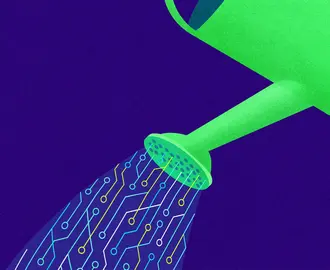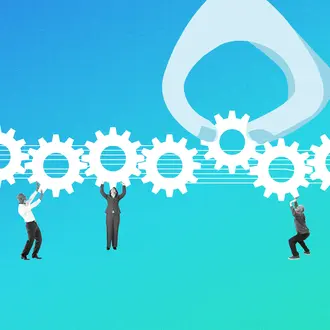Credit: Ico Maker / Shutterstock
Productivity levels for the American manufacturing industry have remained flat for the last decade. Firms can take many paths to encourage innovation — but success isn’t guaranteed without a clear long-term strategy and a substantial shift in the role of factory workers, according to a new research brief from the MIT Task Force on the Work of the Future.
Many changes can be characterized as “Industry 4.0,” which includes Internet of Things devices, real-time data monitoring systems, and 3D printers. Such combinations of technology let manufacturers predict when equipment will break, create smaller and more precise components in less time, and adjust machines for small batches of customized products.
But the authors, who interviewed upper-level managers at 12 large manufacturing firms in four U.S. states, noted that “no single new production system or technological paradigm has emerged,” adding that such technologies “appear primarily as add-ons to already-existing practices rather than a comprehensive overhaul of production systems.”
The paper, “Factories of the Future: Technology, Skills, and Digital Innovation at Large Manufacturing Firms,” is co-authored by MIT’s Elisabeth Reynolds, Anuraag Singh, and Daniel Traficonte, along with Susan Helper, a professor at Case Western Reserve University and a member of the task force’s advisory board. It offers six observations about the impact of digital innovation on manufacturing’s future in the United States.
- Automation-related job loss is not imminent, though jobs will look different. Automation has focused on improving quality control or doing jobs too dangerous for people. Factory floor workers are now expected to monitor a range of machines and analyze data on performance and output.
- Manufacturers need to adopt universal strategies for connectivity and data collection. This lack of system integration hinders progress, forcing knowledge workers to resort to manual processes for tasks such as change orders. It also means newly learned skills don’t transfer to other manufacturers.
- Manufacturers don’t have to go it alone. Most American firms develop technology strategies and training programs internally. Drawing best practices from a broad ecosystem of manufacturers in the region could enable all manufacturers to modernize at a similar pace. This could also influence workforce development and system implementation initiatives across firms.
- The sooner that workers see the technology that management is considering, the smoother the rollout will be. Keeping workers in the dark about what the technology will do, and how they will interact with it, only leads to distrust and tempered enthusiasm.
- Individualized training efforts will only go so far. Focusing on a single system or piece of equipment benefits the firm, but it doesn’t help workers build broadly applicable skills. Partnerships with local universities can fill this gap, and this requires time and monetary investments from industry, government, and academic stakeholders.
- While the United States leads the world in developing digital manufacturing software, it needs to catch up on implementation. Much of this stems from American firms’ focus on short-term shareholder gains, which deemphasizes long-term investment.
Resistance to change is as much organizational as personal
Many managers pointed to factory workers’ resistance to change as the primary barrier to digital innovation. The authors acknowledged this hesitancy but added that firms need to provide workers with the right incentives to learn additional skills.
These incentives include breaks from current duties to undergo training, wage increases tied to learning new skills, and broader allowance for reduced performance or noncritical mistakes while new systems are implemented.
“Managers did not always adjust the risks and rewards of the adoption of new technologies for different groups of workers,” the authors write. “When they met resistance, they just assumed that older workers did not want to change.”



